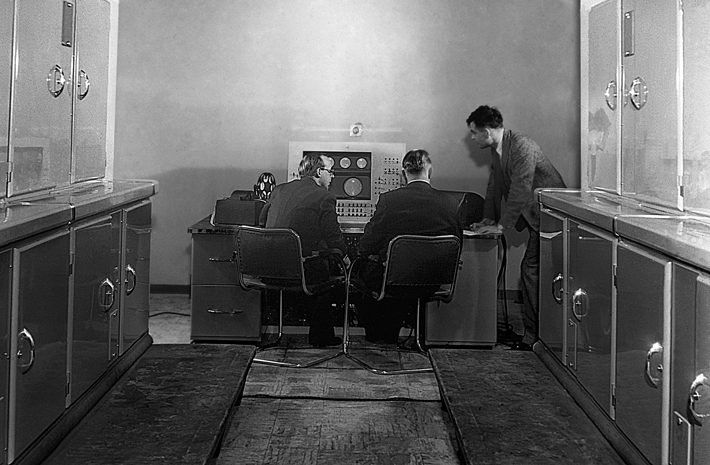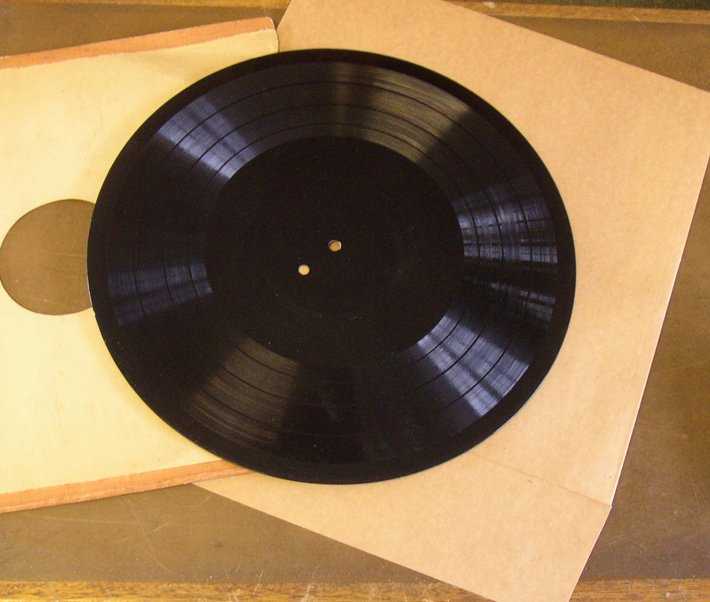Digging up Digital Music
March/April 2017

Archaeologists think of stone tools in terms of “technologies”—the particular ways that they were made and used—that help us understand the cultures that produced them. Today we have our own technologies, but they come and go at a vastly different pace. Their life spans are measured not in thousands of years, but in months and even days. To modern digital technology, 65 years is an eon.
The late 1940s and early 1950s saw the birth of the computer age, and one of its nurseries was the Computing Machine Laboratory in Manchester, England, led by logician and cryptanalyst Alan Turing. Lesser known among the many innovations to come out of the lab—including “Baby,” the first stored-program computer—are the first melodies generated by computer, the most distant ancestor of modern electronic music. Recently, a philosopher and a composer collaborated to analyze and restore the earliest known recording of these melodies—a founding artifact of the age of digital music.
According to Jack Copeland, philosopher and director of the Turing Archive for the History of Computing at the University of Canterbury in Christchurch, New Zealand, Turing’s Mark I computer generated its first “notes” in 1948. The machine had a hooter to provide auditory feedback, a middle C-sharp that Copeland describes as “like a cello playing underwater,” which could produce different notes when activated in different patterns. In 1951, a schoolteacher named Christopher Strachey convinced Turing to let him program the lab’s next machine, the Mark II. Strachey, who became one of the world’s foremost programmers, coaxed it to play “God Save the King,” England’s national anthem. Turing’s response: “Good show.” (A computer in Melbourne was doing similar work around this time as well.)
 The same year, the British Broadcasting Corporation (BBC) recorded three melodies from the machine: the anthem, “Baa Baa Black Sheep,” and Glenn Miller’s “In the Mood.” The analog recording charmingly captures the voices of people in the room: “The machine’s obviously not in the mood,” a woman jokes during the Miller tune. The BBC likely destroyed its copy, but Frank Cooper, an engineer at the lab, asked for a souvenir version—a black, 12-inch acetate record that survives in private hands. “They knew how priceless this disc was,” says Copeland, “so they held onto it.”
The same year, the British Broadcasting Corporation (BBC) recorded three melodies from the machine: the anthem, “Baa Baa Black Sheep,” and Glenn Miller’s “In the Mood.” The analog recording charmingly captures the voices of people in the room: “The machine’s obviously not in the mood,” a woman jokes during the Miller tune. The BBC likely destroyed its copy, but Frank Cooper, an engineer at the lab, asked for a souvenir version—a black, 12-inch acetate record that survives in private hands. “They knew how priceless this disc was,” says Copeland, “so they held onto it.”
A digital copy of the record was later made by the British Library, and Copeland and composer and musician Jason Long analyzed it. In studying the frequencies on the recording, they found some notes that the computer would not have been able to produce. Copeland and Long thought about what might have created these “impossible notes,” including errors in the speed of the BBC’s portable disc cutter. The researchers wrote a simple program and found that, sped up just a few percent, the recording perfectly matched the notes the computer could produce. With a little more cleaning up, the machine’s original voice emerged. “It just sounded right for the first time,” says Copeland. “We never knew it sounded wrong until we heard it right. We were able to dig up the original sound.” Although it is only sound, it is a compelling reflection of its time.
Today, early artifacts of the digital age—chips, computers, equipment, diagrams, technical documents, even programs—are important historical records of developments that shape modern life, and they are at risk of being forgotten or destroyed. “The digital world moves so fast, it’s constantly refreshing itself to such a degree that it is creating all kinds of opportunities for archaeology,” says Christopher Witmore, an archaeologist at Texas Tech University who both works on ancient sites in Greece and writes about the archaeology of the more recent past. “Archaeology is rich enough to encompass all of these things.”
To hear the restored recording of Turing’s Mark II, click below.